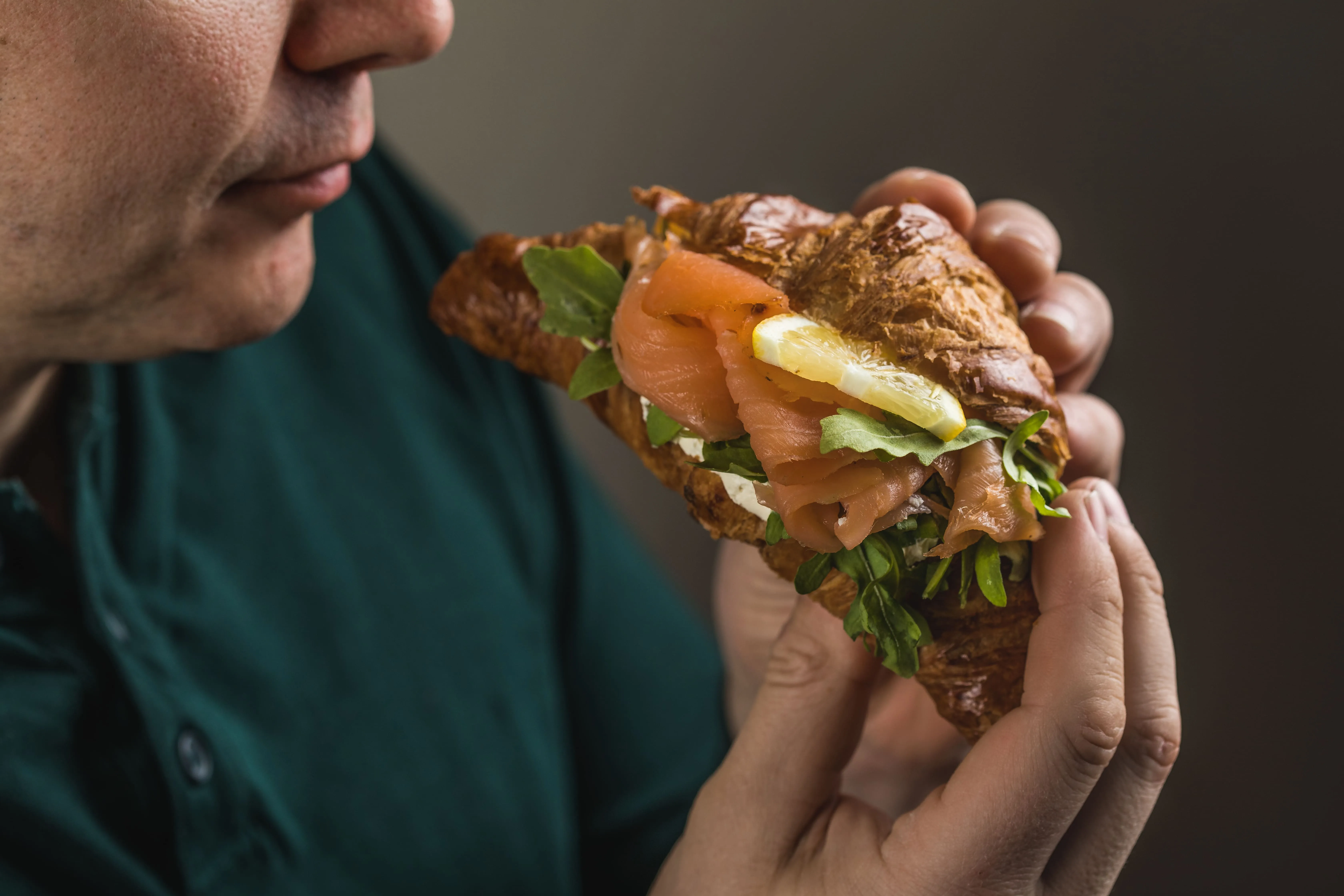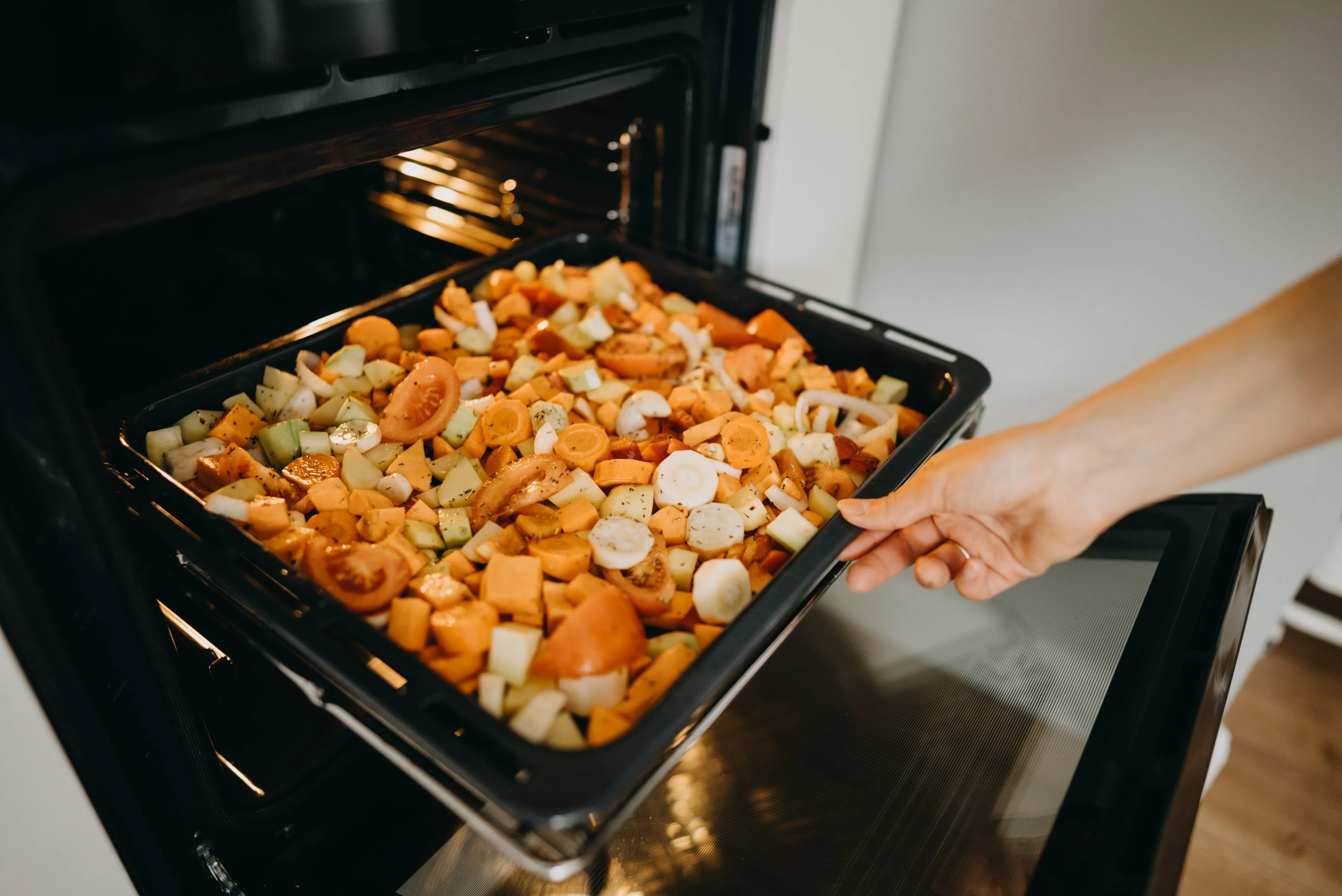Key Takeaways
- Meal sequencing helps prevent glucose spikes and support stable blood sugar by following the simple rule: eat fiber first, protein and fat next, and carbohydrates last.
- Using meal sequencing during fall feasts and holiday meals allows you to enjoy comfort foods like mashed potatoes and pie without the post-meal energy crash or blood sugar roller coaster.
- Research shows meal sequencing supports better metabolic health and weight management, improving insulin sensitivity and appetite regulation while reducing glucose variability.
- Track your meal sequencing results with a continuous glucose monitoring (CGM) to personalize your glucose-friendly holiday meals and discover how food order impacts your metabolism in real time.
that {{mid-cta}}
Fall gatherings are full of comfort foods, like stuffing, mashed potatoes, and pies, that can send your blood sugar on a roller coaster. Meal sequencing is a simple, science-backed strategy to help you enjoy fall feasts while supporting your metabolism and maintaining stable energy levels. In short, meal sequencing involves eating foods in a specific order to blunt the post-meal rise in glucose.
Let’s unpack the science on food order and blood sugar, outline practical strategies for glucose-friendly holiday meals, and show how Signos can support your meal sequencing journey so you can navigate fall feasts without the energy crashes.
What Is Meal Sequencing?

Planning meals to support glucose levels can be challenging. But it doesn’t have to be. Enter meal sequencing.
Meal sequencing refers to eating foods in a specific order (fiber first, protein and fat next, and carbohydrates last) to minimize glucose spikes. This simple shift enhances glucose stability and insulin sensitivity without altering your diet. It’s a simple, practical approach to glucose control.1
The research is clear: meal sequencing prevents glucose spikes and supports more stable glucose levels.
- Studies among individuals with type 2 diabetes have shown that food order matters for diabetes care. Eating dietary fiber and protein before carbohydrates blunts the glucose response.1 One study observed that eating carbs last resulted in a 23.1% lower postprandial average glucose compared to eating carbs first.2
- Among healthy individuals, research shows that eating vegetables before protein, then carbs, results in a flatter glucose curve.3
Fall feasts often mean elaborate meals that may not support your metabolism. Holiday meals are rarely glucose-friendly, with carb-heavy foods and large portions. Meal sequencing helps ease the stress of holiday feasts by providing a valuable tool to prevent glucose spikes while still allowing for indulgence.
The Science Behind Sequencing

Carbohydrates, whether whole grains, complex carbs, or refined, simple sugars, affect blood glucose levels. But the order in which you eat carbs changes the glucose response. Sequencing meals supports appetite regulation, metabolic health, and weight loss by increasing satiety and altering hormonal responses.1
Here’s how it works: Consume fiber-rich foods first, then protein, followed by carbohydrates for the most pronounced effect on postprandial blood glucose levels.1, 3
- Fiber first. Dietary fiber forms a gel-like layer in the gut that slows carbohydrate absorption, reducing the glucose surge. Fiber-rich foods include veggies, whole-grain carbohydrates, legumes, nuts, seeds, and fruits.
- Protein second. Protein increases glucagon-like peptide-1 (GLP-1), slows gastric emptying, and lessens glucagon and insulin secretion for better glycemic control.1
- Healthy fats help too. Olive oil, nuts, and avocados, consumed before carbohydrates, slow the movement of food through the digestive system and reduce postprandial glucose levels, but don’t affect insulin levels.
- Carbs last. Eating carbs last increases GLP-1 production, leading to more stable postmeal insulin and glucose levels compared to eating carbs first.2
Metabolic Playbook: Sequencing Strategies for Fall Feasts

You don’t have to skip your favorite dishes to manage your glucose levels. The key is to follow a balanced plate and eat food in a specific order. Here’s how to build your own metabolic playbook for fall feasts.
- Start with the half of your plate that’s non-starchy vegetables. Begin your meal with non-starchy vegetables, such as leafy greens, carrots, tomatoes, peppers, broccoli, or mushrooms. Prioritize fiber-rich vegetables, such as Brussels sprouts, kale, and broccoli. Fiber from eating vegetables forms a gentle barrier in your digestive tract, slowing digestion and reducing the post-meal glucose surge.
- Eat protein second. Enjoy your protein-rich main, whether it’s roasted turkey, tofu, baked salmon, or beans. Protein slows the movement of food through your digestive tract and stimulates GLP-1 to promote steadier blood glucose levels.
- Add in carbs. Save the carbs for last, and keep it to one-fourth of your plate. Eat dinner rolls, macaroni and cheese, stuffing, or potatoes after you’ve had your veggies and protein.
- Save sweets for last. Sweet treats abound during the holidays, and you don’t need to ditch them entirely. Instead, end your meal with a small portion of sweet treats and try pairing with a protein source to blunt the glucose response.
- Lower the glycemic index of starchy vegetables. Cook the potatoes, then cool them before serving to lower their glycemic index and improve blood glucose control. Leave the skins on potatoes to boost the fiber content of these starchy vegetables. Incorporate these strategies to prevent glucose spikes with starchy vegetables.
- Drizzle olive oil on veggies. Seeking additional support for your fall feast metabolism? Drizzle olive oil on your vegetables. Consuming olive oil before carbohydrates boosts GLP-1 and slows digestion, lessening that glucose rise.1
- Drink water at the end of the meal. Drinking water dilutes blood sugar levels, reducing the risk of a glucose spike.
- Take a short walk after the meal. A 10- to 20-minute walk after dinner helps muscles take up glucose, preventing spikes and reducing some of the post-meal sluggishness.
Real-Life Fall Feast Examples

Here’s how you can put meal sequencing into action at your next gathering. Focus on a balanced diet and the food order to maintain better glucose levels.
- Thanksgiving dinner: Salad, green beans, veggie soup, or Brussels sprouts first, then turkey, followed by stuffing, mashed potatoes, or macaroni and cheese. Eat pumpkin or pecan pie last, using a dollop of Greek yogurt instead of whipped cream.
- Tailgating: Veggie skewers or crudité with Greek yogurt dip, followed by grilled chicken or tofu, and finished with chips and pretzels. Unsure if there will be vegetables at your tailgate? Bring the veggies yourself so you can choose which ones you want and how they’re prepared.
- Friendsgiving potluck: Roasted non-starchy vegetables like Brussels sprouts first, then lentil stew or baked salmon, followed by macaroni and cheese and sweet potatoes.
The Signos Approach: Data-Proven Sequencing
.webp)
Signos pairs continuous glucose monitoring (CGM) with in-app insights to provide real-time, personalized feedback, helping you optimize meal sequencing for your metabolism.
1. Test traditional vs. sequenced eating
Run a simple experiment: eat your favorite fall meal twice, once with carbs first, and once using meal sequencing (fiber → protein/fat → carbs). Your CGM data will likely show a lower, flatter glucose curve when you save carbs for last.
2. Try sequencing experiments in the Signos app
Use your CGM and app insights to explore how food order, timing, and pairing affect your glucose:
- Fiber first: Eat veggies 10–15 minutes before the main course and compare spikes to eating everything together.
- Protein with dessert: Pair a protein (like turkey or Greek yogurt) with sweets and observe a gentler glucose rise.
- Meal timing: Sequence the same meal at lunch vs. dinner to see if time of day changes your response.
- Fat first: Add olive oil, nuts, or avocado before carbs and track how it impacts your glucose curve.
3. Monitor glucose variability
The Signos app visualizes your data as peaks and slopes, showing how quickly your glucose rises and falls. A sharp climb followed by a drop signals a potential glucose crash. Use these patterns to connect how your sequencing experiments influence your energy, focus, and cravings.
4. Personalize your meal sequencing strategy
Everyone’s metabolism is unique. With Signos’ continuous feedback loop, you can discover the best food order, timing, and combinations for your body, helping prevent glucose spikes, sustain energy, and support weight management through every fall feast.
The Bottom Line
Meal sequencing is flexible. It’s not about restriction but the food order. Once you know to eat fiber first, protein and fat next, and carbs last, you can apply this approach anywhere, from weeknight dinners to fall feasts.
Learn More With Signos’ Expert Advice
Meal sequencing provides the “what,” and Signos’ continuous glucose monitors give the “how.” By merging the science of food order and blood glucose with metabolic data, Signos empowers you to personalize your plate for lasting metabolic benefits through the holidays and beyond.
Discover how Signos can enhance health with our expert blog, written by healthcare education specialists and registered dietitians.




.svg)










.svg)
.svg)
.svg)
.svg)
.svg)
.svg)
.svg)
